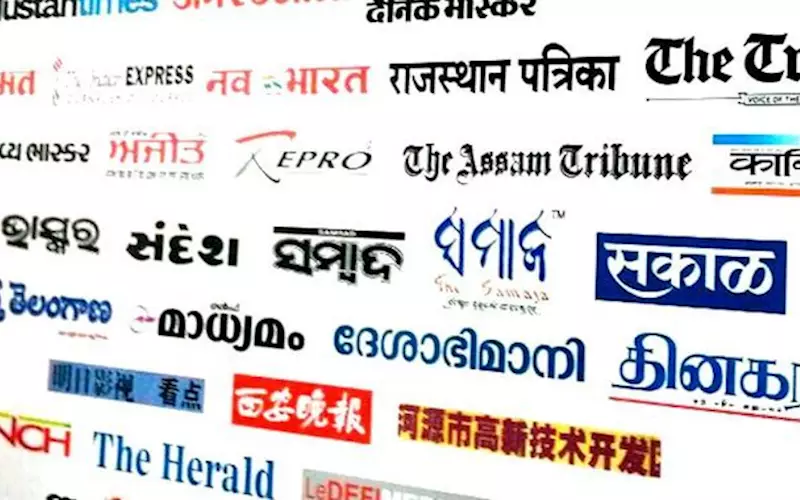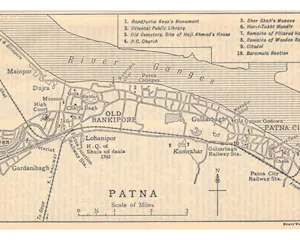Print News from Round the World
This edition of the weekly update includes how the Indian paper industry revived itself from a slump; Arun Jaitley puts end to speculations over Rs 2,000 notes; about Rs 5,000 crore spent on printing new 500 notes; and CBSE asks to sell only NCERT books in tuck shops
03 Jan 2018 | By Dibyajyoti Sarma
How the Indian paper industry revived itself from a slump
Shares of Indian paper companies are at all-time highs but analysts believe they are far from being overvalued. Most of these stocks are trading in the high single digits or low teen earnings multiples. Besides, their enterprise value is still far below replacement cost, the expense on setting up a similar plant. “Over FY17-21E, industrial paper, recycled fibre-based packaging boards and uncoated copier paper segments are expected to witness healthy performance,” says Akul Broachwala, analyst, IIFL. Paper companies could face a re-rating similar to the cement industry’s experience since 2008-11.
The first phase of earnings recovery was led by consolidation. Paper sector has not seen any new major capacity addition over the past three years. Now the second leg of earnings growth could come from changes in the global paper industry. Since mid-2017, Chinese plants that produce from waste (recycled) paper shut down and demand for wood pulp (natural fibre) increased. Major pulp exporters such as Indonesia, Malaysia and Chile have now diverted all pulp to China at a much higher price, leading to sharp rise in price of end product.
This will benefit Indian companies such as JK Paper, West Coast Paper, International Paper APPM and ITC as they are backward integrated and will also get more room to take price hikes. The ban of waste paper in China is expected to lower its price internationally, which should also prove beneficial for some.
“Natural fibre manufacturers will be benefited with the diversion of wood pulp from ASEAN to China and western Europe, leading to improving their pricing power. On the other hand, demand for quality packaging paper and board may increase as demand from China may flow to India,” says Rabindra Nath Nayak, analyst at Sunidhi Securities.
In H1, most companies have given a strong earnings growth of 30-150%. These paper stocks are trading at 8-12 times trailing earnings and below 10 times their expected FY19 earnings. With such low multiples, paper stocks are the cheapest, making these companies good acquisition targets. (Courtesy The Economic Times)https://economictimes.
Arun Jaitley puts end to speculations over Rs 2,000 notes
Union Finance Minister Arun Jaitley has put an end to all rumours about the Reserve Bank of India (RBI) holding back Rs 2000. “Many such rumours are being spread, which are wrong. Don’t believe such things till any official announcement is made,” the Finance Minister said. Earlier, a State Bank of India (SBI) research report had noted that the RBI may either be holding back Rs 2000 notes or could have already stopped printing it.
The report titled, ‘Are Rs 2,000 high denomination notes being held back?’ juxtaposed data presented in the Lok Sabha recently with the latest RBI Annual Report to arrive at this conclusion. Comparing the data presented in the Lok Sabha recently with the one provided by the RBI in its annual report earlier, the report, authored by the bank’s chief economist, Soumya Kanti Ghosh, cited, “we observe that the value of small denomination currency in circulation up to March 2017 was Rs 3,501 billion. This implies that the value of high denomination notes was equivalent to Rs 13,324 billion as on 8 December, after netting out the small denomination notes from the currency in circulation on that day, it said.”
The report further added according to Ministry of Finance, the RBI has printed 16,957 million pieces of Rs 500 notes and 3,654 million pieces of Rs 2,000 notes as on 8 December. The total value of such notes translates into Rs 15,787 billion. “This indicates that the residual amount of 2000 rupee notes of Rs 2,463 billion may have been printed by the RBI but not supplied in the market.”
The report also averred that, “it is safe to assume” that Rs 2,463 billion may be on the lower side as the RBI must have printed notes of small denomination in the interregnum (Rs 50 and Rs 200). Ghosh also said that as the rupee 2,000 denomination led to challenges in transactions, it ‘seemed that RBI may have either consciously stopped printing’ these notes ‘or is printing them in smaller numbers after the initial print run to normalise the liquidity situation’. (Courtesy The Free Press Journal) http://www.freepressjournal.
About Rs 5,000 crore spent on printing new 500 notes
The government has informed the Lok Sabha that about Rs 5,000 crore was spent on printing of new Rs 500 currency notes post-demonetisation. As per the information provided by Minister of State for Finance P Radhakrishnan in a written reply, as many as 1,695.7 crore pieces of Rs 500 denomination note were printed till December 8. The amount spent on production of Rs 500 notes was Rs 4,968.84 crore, he said.
The minister also informed that the RBI printed 365.4 crore pieces of Rs 2,000 notes. The cost incurred is about Rs 1,293.6 crore. Similarly, Rs. 522.83 crore have been spent on printing of 178 crore pieces of Rs. 200 notes. “New design notes in the denomination of Rs 50, 200, 500 and 2,000 have been introduced after demonetisation,” the minister said.
In another reply, he said the surplus transferred from the RBI to the government has declined by Rs 35,217 crore in 2016 -17 mainly on account of increase in expenditure on printing of currency notes.
The RBI had transferred Rs 65,876 crore as surplus to the government in 2015-16. The amount reduced to Rs 30,659 crore in 2016-17.
The government on November 8, 2016 announced to demonetise old Rs 1,000 and Rs 500 notes, which together accounted for about 86% of the currency in circulation. About 99% of the scrapped currency was returned to the RBI. (Courtesy NDTV.com) https://www.ndtv.com/india-
Sell only NCERT books in tuck shops: CBSE
The Central Board of Secondary Education (CBSE) has clarified that only National Council of Educational Research and Training (NCERT) books and stationery can be sold in tuck shops on school premises. Additionally, the board has said schools cannot force parents to buy anything from them.
Earlier this year, the board had allowed schools to open tuck shops on their premises to sell books and other material to students. However, the circular led to confusion among parents and schools.
In a recent clarification, the CBSE said, “Schools can open small outlets for supply of only NCERT books and shall not sell books of any other publishers. Besides, the schools are also permitted to provide stationery items to its students like pen, pencil, copy, register, notebooks, eraser, sharpener, blank sheets and art, and art and craft material. The price charged for all these items should not be more than the MRP.”
Schools also cannot force parents from buying from the tuck shops. "Parents are free to buy textbooks and stationery items from within the premises or from any other vendor of their choice. Further, selling books other than NCERT will be considered a violation,” said the circular. (Courtesy The Times of India)














 See All
See All